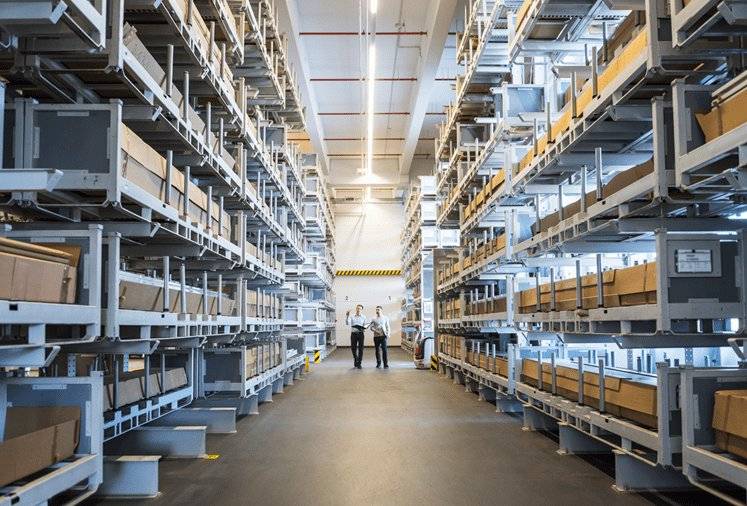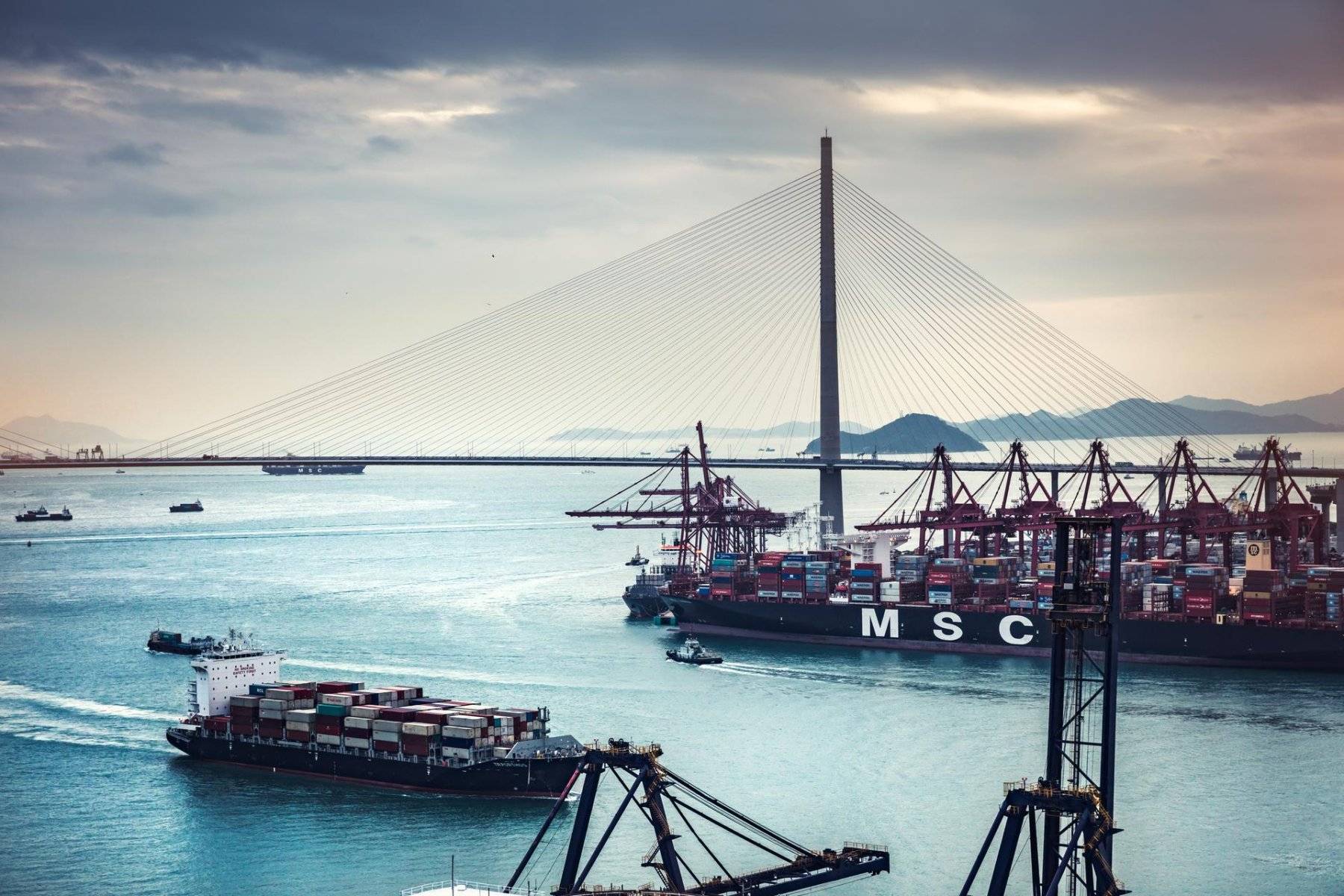International shipping is an essential part of the international supply chain and logistics process. It requires careful planning, preparation, and a reliable freight carrier to ensure your cargo arrives safely at its destination.
Understanding freight shipping is critical to making wise decisions for your shipment and tracking it as it progresses.
In this post, we'll cover everything you need to know about freight shipping - from understanding key milestones in the process to preparing for shipment and selecting a trusted partner, like SeaRates, who meets all your needs.
Understanding global shipping
International delivery services are means of transferring items from one area to another globally. It can involve any type of cargo, from raw materials to finished products.
International freight shipping is often used for international trade and when larger quantities need to be moved quickly and efficiently. Different modes of freight shipping are available, each with its own advantages and disadvantages.
What is global freight shipping?
Freight carriage necessitates the conveyance of items by a transporter, such as trucking and haulage firms, cargo vessels, and airlines, whether over land, sea, or sky.
The carrier will usually provide storage facilities at their destination point until the shipment arrives safely at its final destination port or airport.
This process requires careful planning and organization on behalf of both shippers and carriers alike in order to ensure that all shipments arrive on time without any delays or damages incurred along the way.
International shipping companies excel at simplifying the entire process by assuming responsibility for every aspect. They expertly manage logistics, customs, and tracking complexities, making the shipping experience hassle-free for businesses while ensuring that shipments reach their destinations reliably and without complications.
Types of freight shipping
The most common types of freight shipping include road transport (trucking), rail transport (railroad), air transport (airlines), and maritime transport (ocean liners).
Road freight may be more economical for shorter trips, while sea freight could prove advantageous on lengthy voyages given its greater fuel efficiency in comparison to air freight.
Additionally, some shipping companies offer combined modes, which allow them to move large amounts of cargo faster. This is also to facilitate the first mile and last mile, which cannot be achieved with one mode alone.
Combining road/rail/air/sea services into one package is known as either multi-modal or intermodal transportation solutions.
Benefits ofinternational freight shipping
Gaining knowledge of freight transportation is essential to guaranteeing your cargo arrives securely and punctually. Preparing for international freight shipping requires attention to detail, so make sure you understand all the necessary requirements before getting started.
SeaRates Insight: Global freight shipping is an effective and economical means of transporting goods from one point to another, offering a variety of options based on cargo type, distance, speed required and even multi-modal solutions.
It offers multiple options depending on the type of cargo, distance, and speed needed, with multi-modal solutions available for large shipments that need fast delivery times.
Careful planning and organisation with SeaRates freight shipping can help ensure your shipment arrives safely at its destination without any delays or damages incurred along the way.

Preparing for freight shipping
Before shipment, there are essential steps to be completed to make sure your cargo is ready for freight transport. First, check out our Quick Guide to Shipping Container types. This resource provides valuable insights into meeting packaging and labeling requirements, organising necessary documentation, and making informed decisions about insurance coverage.
Adhering to the carrier's packaging requirements for international shipping is essential for a successful freight shipment. These may include:
- Materials such as cardboard boxes or plastic containers
- Size, weight, and closure specifications
- Cushioning with bubble wrap or foam peanuts
- Proper labelling of each package- an address label and a master shipping label listing all contents of the shipment.
If these guidelines are not followed, it could result in pickup delays or even cargo rejection.
Paperwork requirements may differ based on the type of goods being shipped, necessitating additional forms to be completed before sending off your shipment.
Common shipping documents include:
- Bills of lading (BOL)
- Commercial invoices
- Certificates of origin
- Shipper’s export declarations (SED)
- Hazardous material forms (HMF), if applicable
These documents provide critical information about the goods being shipped, including their value for customs purposes.
To make sure all the required documents are completed accurately, using a comprehensive freight company like SeaRates minimises problems during transit or when crossing borders into other countries.
Preparing for freight shipping requires thorough research and knowledge of the various requirements to ensure a successful shipment. Picking the right shipper is vital for ensuring a hassle-free and economical delivery of your consignment from origin to destination.
SeaRates Insight: As a savvy shipper, it's essential to adhere to carrier packaging requirements and gather all necessary documentation before sending off your shipment. Once your cargo is ready to be packed, you’ll need to optimise the space for your cargo to ensure that all your goods will be stuffed properly. Our SeaRates’ Freight Calculator is a web-based tool that provides a 3D simulation to guide you through your container packing journey. To ensure smooth sailing for your cargo, don't forget this key milestone.

Choosing a freight carrier
Picking the appropriate freight transporter is essential for guaranteeing your payload arrives securely and promptly. Weighing up expenses, appraisals and rankings, insurance policy, dependability of service provision, delivery times, and other elements are all significant when picking a freight forwarder.
Examining both the stated international shipping rate and any extra charges or fees is essential when evaluating international shipping costs between providers. Many carriers offer discounts for frequent shippers or those who book their shipments in advance. It’s also worth considering if there are any extra services you need, such as tracking or expedited delivery, which could add to the overall cost of shipping.
Researching carrier reviews, references, and ratings can help you get an idea of how reliable they are with delivering goods on time and what kind of customer service they provide should something go wrong during transit.
By partnering with SeaRates as your freight forwarder, you can work smarter, saving you time and money.
We provide the lowest shipping rates and shortest transit times. SeaRates is the largest tariff search engine in the world for international shipping. We compare all available cargo delivery options at your request and arrange their transportation and cargo insurance. We provide enhanced tracking and control, as well as 24/7 customer support across all time zones.
Weighing all the details when selecting an international freight service is essential to guarantee your shipment's success. Tracking your shipment throughout its journey can help you stay informed and proactively avoid potential delays.
SeaRates Insight: It's important to compare shipping quotes and consider transit times. Do your due diligence to get the best freight rates, ensuring timely delivery of goods.
Tracking your shipment
Tracking international shipments is an important part of the shipping process. Tracking your cargo is essential for successful delivery; having the right resources and understanding can guarantee that it arrives securely and promptly. Here’s what you need to know about tracking freight shipments:
How to track your shipment:
Tracking a shipment is now easier using today’s modern technology. You can use your container tracking number, which is on your booking confirmation or your bill of lading.
With SeaRates' Tracking System, you can track your shipments in real-time.
Our user-friendly dashboard provides detailed information on each step of the journey, including estimated delivery times and delays due to weather or port congestion, as well as exceptions.
These services can also be used to assess the cost-effectiveness of various carriers, helping you make wise decisions when selecting quotes for your international shipment.
Key milestones in the shipping process:
Knowing where your cargo is at all times will help keep things running smoothly during transit.
Key milestones include:
1. Pickup from origin
2. Arrival at port of loading
3. Vessel scheduling departure date/arrival date at port of discharge
5. Final delivery by truck/rail/airfreight
6. Confirmation from consignee upon receipt of goods. It’s important that all parties involved are kept up to date throughout this process so any issues can be addressed quickly before they become major problems down the line.
7. First/last mile logistics solutions.
Unfortunately, a number of uncontrollable elements may lead to hold-ups in transit, like inclement weather or an unanticipated port clog.
However, there are ways we can mitigate these risks through careful planning beforehand; for example, making sure the correct paperwork has been completed correctly before shipping out, ensuring containers have been properly sealed and researching potential ports ahead of time.
By being proactive, we should be able to minimise any disruption caused by external events like those mentioned above to protect the company's bottom line.
SeaRates Insight: Visibility on freight shipments is crucial, as potential complications and delays can arise during transport.
By utilising the right tools and proactively preparing ahead of time with accurate paperwork, we can minimise any unexpected delays or problems, ensuring cargo arrives at its destination safely and on time.
Take the guesswork out of freight shipping. Ship to and from anywhere in the world and find the best freight quote with SeaRates.
Get up-to-date information in real-time on key milestones and gain an understanding of how to ship your cargo quickly, efficiently, and cost-effectively.
Take a look at our FAQ’s,
FAQs in relation to freight shipping
What is a freight shipping overview?
Transporting goods, materials, and products from one location to another by land, sea, or air is known as freight shipping. It involves a variety of different activities, including:
- Loading and unloading cargo
- Tracking shipments in transit
- Managing inventory levels at ports of entry/exit
- Ensuring that all customs regulations are met
The key milestones for successful freight shipping include:
- Selecting the right carrier
- Preparing documents such as bills of lading
- Arranging payment terms with carriers
- Packing cargo correctly
- Obtaining insurance coverage
- Monitoring shipment progress throughout its journey
- Receiving shipment safely at its destination
What are the benefits of freight shipping?
Freight shipping offers many benefits to shippers, including:
- Cost-effective, efficient, and reliable transportation compared to alternative methods.
- Shorter delivery times and enhanced security through secure packaging.
- Tracking capabilities are often included, offering end-to-end shipment monitoring.
- Improved visibility that empowers better inventory management and supply chain optimization.
- Ensuring both affordability and on-time, damage-free delivery for businesses.
What are the freight shipping methods?
Freight shippingt options are contingent upon the size, mass, and final destination of the freight.
The most common methods are:
Air freight - usually used for time-sensitive shipments that need to reach their destination quickly; however, it can be expensive due to high fuel costs.
Sea freight- Also known as ocean freight, it is a cost-effective way of transporting goods over long distances but may take longer than other options due to transit times between ports.
Rail freight- offers an efficient option for transportation in countries with well-developed railway networks.
Road/haulage transport- often more suitable for short-distance deliveries or when combined with another mode such as rail or sea transport.
What is the importance of freight?
Freight plays a pivotal role in the supply network, enabling items to be shifted from one spot to another. It facilitates the flow of goods and services throughout a country or region, helping businesses meet their customers’ needs quickly and efficiently.
Freight also helps keep costs down by:
- Reducing transportation times
- Increasing efficiency in operations
- Lowering overall expenses for shippers
- Guaranteeing that goods reach their destination without any harm or hold-ups due to weather conditions or other variables
As such, freight plays a key role in global trade and commerce today.

